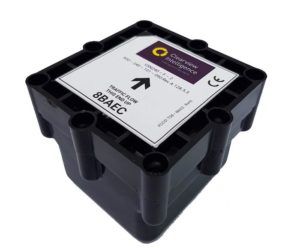In this blog from Clearview Intelligence, Andrew Rhodes, head of marketing at the organization, explores if and how magnetometers can be used in freeway incident detection and automatic signalling (MIDAS).
Traditionally inductive loops have been the choice for operators of the SRN (Strategic Road Network) to gather data and information to help run their roads. From counting and classifying to smart motorway running, they have helped provide feedback on the type and quantity of vehicles using our roads, as well as the speed of the traffic.
New technology choices are now beginning to emerge that are competing with loops such as radar and magnetometer-based detection.
Every option has its pros and cons; some can give greater accuracy, some provide flexibility and some claim lower maintenance costs.
Radar sits at the side of the road, removing the in-road problems associated with invasive installations, but reliability can be adversely affected by site topography and proximity to external structures, impacting on the data quality.
Can magnetometers do the job?
For the past 10 years, magnetometers have been available to use on the nation’s roads as a means of detecting vehicles, predominately working on traffic signals in cities and major junctions across the UK. Up until now, use of magnetometers as part of MIDAS (Motorway Incident Detection and Automatic Signalling) and NTIS (Network Traffic Information Service) data collection has had limited uptake.
 Like the others, magnetometers have their pros and cons but seem very well suited to meet Highways England’s’ focus on driving efficiencies through:
Like the others, magnetometers have their pros and cons but seem very well suited to meet Highways England’s’ focus on driving efficiencies through:
- Reducing the invasive nature of the detection solution (it sits in a small 65mm diameter hole in the centre of the carriageway)
- Reducing installation costs through quicker install times
- Reducing traffic management costs due to reduced lane closure needs
- Removing the need for expensive ducting and trenching for power or cables across the road
- Increasing ROI through reduced life time costs by having kit in the road that lasts longer (over eight years battery life)
- Less overall maintenance time and costs on installed kit
- Minimising road worker exposure on site through the reduced installation time and maintenance requirements
The main hesitation in using magnetometers on the SRN seems to have been the concern over data quality when compared to the standards required and achieved by inductive loops, but this has now been assessed and monitored over a year-long trial and the results are very positive indeed.
Over a year ago, a group of interested parties in the North East region formed a project group to carry out the installation, monitoring and analysis of magnetometers versus loops on an existing MIDAS installation at the Hook Moor interchange on the M1 junction 48/A1(M) junction 43.
The group consisted of engineers from:
- Highways England
- A-one+ (Area 12 ASC)
- Connect Roads (Area 27 M1-A1 Link Road DBFO)
- Mway Comms
- Clearview Intelligence
Clearview’s M100 magnetometers were placed in the same MIDAS locations as existing loop technology to compare speed, traffic flow, HIOCC alerts and vehicle classification detection.
Positive trial results
A report on the trial was compiled by Jacobs, which provides consultancy services to A-one+, and found that the magnetometer equipment “performs like-for-like compared with inductive loops at similar locations, with some minor differences in vehicle categorisation”.
The data was then sent to the team at NIS (Network Information Services Ltd who are responsible for managing NTIS), who confirmed the vehicle length data would pass their validation against loop data requirements.
The report concludes “in a period of uncertainty surrounding the suitability of other above ground detection technology, magnetometer technologies offer an alternative solution to traditionally applied techniques. These technologies are now being applied more and more and are widely available in the market”.
Subsequently, Clearview has started work with A-one+ on the M62 upgrade work where eleven loop sites will be replaced with M100 magnetometers to provide MIDAS data.
Clearview is also about to embark on a separate project with A-one+ which will see magnetometer data feeding into the CHARM (Common Highways Agency Rijkswaterstaat Model) project at several CHARM boundary sites. This will allow insight into traffic flows in and around Highways England Area boundary lines.
This independent proof of the accuracy and compatibility of M100 data for use with MIDAS, NTIS and CHARM means road operators now have an additional option on how they pull data from their road network, and another consideration on how to drive efficiencies and gain an improved return on the investments currently being made across the SRN.
Author: andrew.rhodes@clearview-intelligence.com
Click here to subscribe to the Clearview Intelligence blog.





